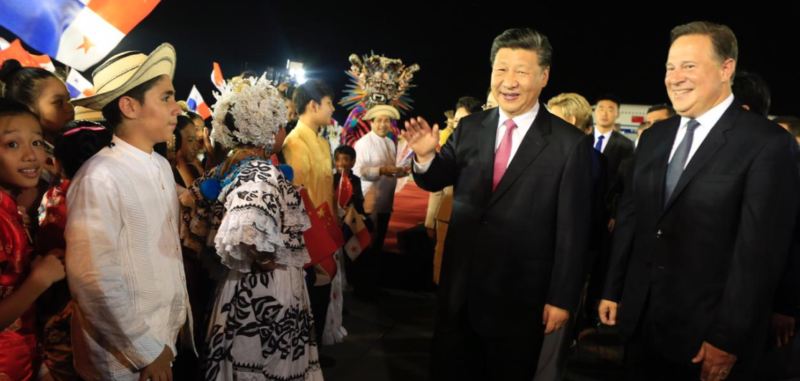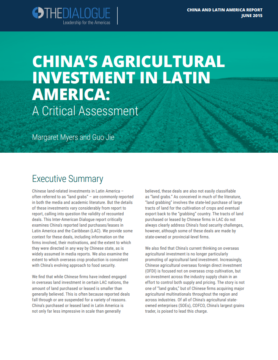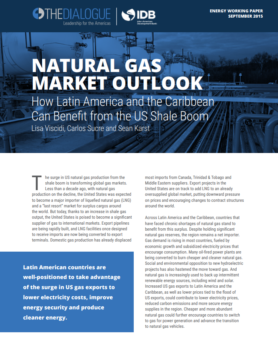The Nationalism of Cristina Fernández de Kirchner
Argentine President Cristina Fernández has increased her appeals to nationalist sentiment to build domestic political support.
A Daily Publication of The Dialogue
Chinese President Xi Jinping on Dec. 3 made his first state visit to Panama, during which the two countries signed more than a dozen agreements on trade, infrastructure and other areas. During Xi’s trip Latin America, where he attended the G-20 Summit in Buenos Aires, China also signed a $9 billion currency swap deal to help boost Argentina’s foreign reserves. How important is China’s support to Argentina and Panama, and what are the main benefits that China will see from the relationships? What costs will Latin American countries face in exchange for China’s support and largesse? How well are relations with China paying off for the countries, including the Dominican Republic and El Salvador, that have severed ties with Taiwan and established them with China over the past year and a half? What are China’s main goals in extending its influence in the Americas?
Jorge Heine, public policy fellow at the Wilson Center in Washington and former Chilean ambassador to China: “With President Xi’s fourth visit to Latin America since 2013, he has visited 12 countries in the region, more in six years than Presidents Obama and Trump have in 10 years. In Panama, 19 agreements were signed. As Álvaro Méndez of LSE has pointed out, the only reason a China-Panama FTA negotiated in record time was not signed was to avoid embarrassing the United States. (Secretary of State Mike Pompeo visited Panama in November to warn Panama about growing links with China). China is keen to make Panama its regional transport and logistics hub and is investing heavily, including in its largest port. A Chinese company, CCCC, won a $1.4 billion bid to build the fourth bridge over the Panama Canal. In Argentina, Xi, the only G-20 head of state to undertake a state visit, held his fifth meeting with President Mauricio Macri in three years and signed 37 cooperation and commercial agreements, on infrastructure, energy and finance, for $3.35 billion. A $4.5 billion nuclear plant project is pending. The countries made a joint commitment to multilateral cooperation on global issues and signed a five-year bilateral action plan. In El Salvador, China may develop and operate the La Unión port on the Pacific coast, while in the Dominican Republic, increased flows of Chinese tourists may be in the offing. China brings resources to the table ($105 billion in loans since 2005 and twice that amount in FDI), and Latin America brings key commodities. China-LAC trade, at $228 billion from January to September 2018, is up 20 percent year-on-year. China and Latin America are valuable international partners in turbulent times.”
Andrea M. Ewart, CEO of DevelopTradeLaw: “China is emerging as the partner of choice for Latin American and Caribbean (LAC) countries in development of transportation infrastructure. Since 2000, China has provided $2 billion for the construction of roads, bridges, railways and ports across LAC, projects that Western governments and banks have been reluctant to fund. Countries, however, run the risk of assuming debt that they are unable to repay, leading to loss of control of the finished project to the Chinese builders, as has happened in several countries involved in the Chinese ‘Belt and Road’ initiative. Though the LAC region is not formally part of the initiative, China is targeting countries whose strategic location enhance its ability to move goods, people and investments. Panama is an obvious choice. Already the second-largest user of the Panama Canal, China will be designing and building a fourth bridge over the canal. Panama and China have agreed to establish direct routes for commercial traffic and provide Panamanian-registered ships preferential treatment in China’s ports—a boost to China’s ship registry. Panama has also gained approval as a destination for Chinese tourists and agreements on export of Panamanian food products to China. The Dominican Republic, also strategically located and with the strongest economy in the Caribbean, hopes to gain similar benefits from its 2018 decision to establish ties with China. While trade is important, China has bilateral investment treaties with 14 countries in the LAC region and plans to spend $250 billion by 2019 throughout LAC, but only to countries that adhere to its One China policy and have no diplomatic relations with Taiwan.”
Ray Walser, retired U.S. Foreign Service officer and former Latin American policy analyst at the Heritage Foundation: “With each passing year, China deepens its ties in the Western Hemisphere. Given the advantages ranging from rapid economic growth, abundant foreign reserves and a state-dominated economy, China’s approach appears disciplined, relentlessly seeking to leverage diplomatic influence and competitive economic advantage. Moreover, China’s leaders, including President Xi Jinping, do not travel abroad without offering what in the parlance of the diplomatic game are called ‘deliverables.’ Unlike other Chinese clients such as stagnant Cuba, problematic El Salvador and failing Venezuela, Argentina and Panama appear to be relative success stories and worthy targets for mutually beneficial ties. Argentina’s agricultural and economic potential remains great, and the critical importance of the Panama Canal to global commerce will not diminish. Debt traps, a lack of transparency and potential corrupt trade practices clearly lurk beneath the surface, representing a potentially dangerous undertow. Relative indifference to governance issues has long been a staple for Western critics of China’s way of conducting overseas business. Stern warnings regarding the Dragon’s embrace played publicly during Secretary of State Pompeo’s visit to Panama in October. Yet they did not stop Panama’s President Varela from welcoming President Xi with open arms. Clearly, the best U.S. response to China’s advances is a proactive, comprehensive, disciplined approach to the region. Efforts by the Departments of State, Treasury and Defense to highlight initiatives such as America Crece, intensified focus on energy infrastructure and security cooperation often appear out of sync and undercut by President Trump’s fiery America First economic nationalism, fulminations against asylum-seeking migrants and relative disinterest in the geostrategic importance of the Americas. China’s continued regional encroachment needs to be met with serious ‘deliverables’ rather than lecture tours and fretful handwringing.”
Ricardo Barrios, program associate for the Asia & Latin America program at the Inter-American Dialogue: “China’s relations with Argentina and Panama are important to both countries, albeit for different reasons. In troubled Argentina, China has simultaneously positioned itself as an export market, infrastructure financier and source of geopolitical support. These elements were all on display in President Xi Jinping’s recent visit to Buenos Aires, the result of which included Chinese support for a freight train restoration project, a protocol for the import of Argentine strawberries and an e-commerce agreement. Meanwhile, Panama’s strategic position as a hub of world trade has translated into several port construction projects and accelerated free trade agreement negotiations. In contrast, China’s bilateral ties with El Salvador and the Dominican Republic are only just beginning to take shape. The former secured $150 million in Chinese aid in November, and the latter held its first round of business talks with China just this month. Overall, Taiwan remains an influential factor in explaining China’s behavior toward Latin America and the Caribbean. Chinese engagement is not without its potential pitfalls, though, which include asymmetric trade and the possibility of high debt burdens. While China presents itself as a welcoming market, the country has repeatedly demonstrated that it is not shy about tossing its economic weight around. Argentina itself has already experienced what it’s like to be shut out of the Chinese market. Beijing froze Argentine soybean oil imports earlier this decade. In the case of countries with fewer exports, excessive borrowing for things such as infrastructure could prove detrimental over time.”
The Latin America Advisor features Q&A with leaders in politics, economics, and finance every business day. The publication is available to members of the Dialogue's Corporate Program and others by subscription.
Argentine President Cristina Fernández has increased her appeals to nationalist sentiment to build domestic political support.
China is looking for new agricultural investment opportunities in Latin America, but not necessarily for large tracts of land.
Given their close proximity to the United States, LAC countries are well-positioned to capitalize on the surplus of US gas exports and current buyer’s market.
 Chinese President Xi Jinping visited Panama earlier this month following the G-20 Summit. Panamanian President Juan Carlos Varela and Panamanian youths greeted him at Tocumen International Airport. // Photo: Panamanian Government.
Chinese President Xi Jinping visited Panama earlier this month following the G-20 Summit. Panamanian President Juan Carlos Varela and Panamanian youths greeted him at Tocumen International Airport. // Photo: Panamanian Government.

